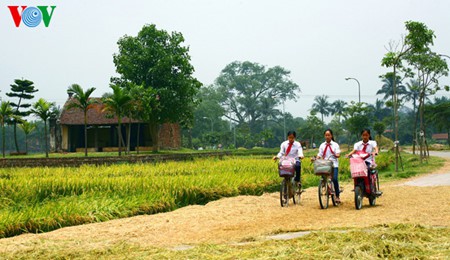Thus, the village was a closed social structure which defined the thousand-year-old character of the Viet village as a close-knit and stable community.
The Viet village combined households into hamlets and hamlets into a village. The village’s organization was closely based on families, clans, and craft guilds.
Architect Nguyen Hoai Viet of Uoc Le village in Hanoi’s suburbs, which is famous for its pork pies, said “Viet villages have always organized their living space around rice farming. The village’s roads and inter-connected alleys all lead to the rice fields to facilitate planting, tending, harvesting, gathering, and transporting the rice.”
Vietnamese rural people attach great importance to family, relatives, and neighbors, preferring a stable life to a life with many changes.
Vietnamese villagers are close, even if they are not related by blood. This unity is summed up by the following proverbs “A stranger nearby is better than a far-away relative” and “Neighbors have one another as a friend in wealth and woe”.
Other important symbols of the village are the banyan tree, the river wharf, and the communal house. Most Viet villages include these icons.
A village gate demarcates the territory it claims from the outside world and is a typical architectural structure that reflects the artistry, status, and virtues of the villagers.
To Xuan Thang of Khanh Van village in what used to be Ha Tay province said “My village is Khanh Van, which means “beautiful cloud”. It’s said that during an early operation near the village, a King of the Le Dynasty noticed that beautiful clouds were shading his troops from the sun. So he named the village Khanh Van. The village, located along the bank of To Lich River, has a peaceful beauty, have led a peaceful life there for generations.”
The river wharf is, traditionally, a place for female villagers to chat while they are bathing their babies or washing vegetables. The communal house yard is for men. The communal house is the center of the Viet village, where important village events take place. It is also the place where village elders convene meetings and make the decisions that will safeguard the village’s customs, social hierarchy, order, and lifestyle.




